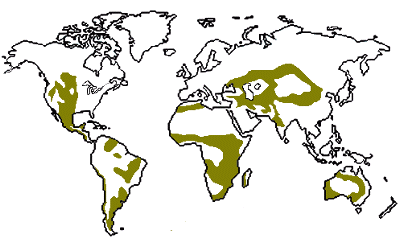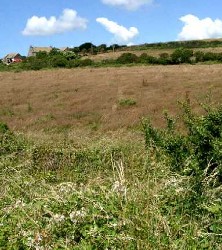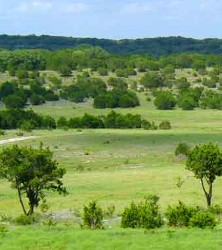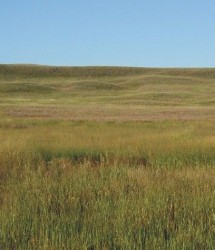 Grassland regions have few trees since there is not enough precipitation; an average of 20-50 cm per year supports mostly grasses and small bushes. All continents other than Antarctica have grassland regions.
Grassland regions have few trees since there is not enough precipitation; an average of 20-50 cm per year supports mostly grasses and small bushes. All continents other than Antarctica have grassland regions. There are two types: prairie grasslands (where temperatures are moderate) and savanna grasslands (where temperatures are warmer). Most of these regions endure dry spells during the year; prairies during the winter, and savannas during the summer dry season. Due to warmer temperatures and abundant grasses, many varieties of wildlife are supported by the grassland biome.    Prairie grasslands are common in North America, although many have disappeared, to be replaced by agriculture. Prairies have warm summers and cold winters. While grasses predominate, there are also varieties of flowering plants and a few trees. Native wildlife includes antelope, buffalo, deer and many species of small mammals. Savannas are grassland regions found in Africa, Australia and Central and South America. They are warm year-round, but often have two seasons based on precipitation: wet and dry. Native wildlife includes many of the largest species on Earth, such as elephants, the hippopotamus, giraffes, lions, cheetahs, and wildebeest. In both types of grassland, living things are adapted for survival in dry periods. Grasses have large root systems. Large animals can travel long distances to graze on whatever is available. Small animals burrow to escape the cold of winter and the predators of summer. Humans make use of the regions by growing crops (varieties of grasses, such as grains) or raising animals that can be fed these grasses, such as cattle. |